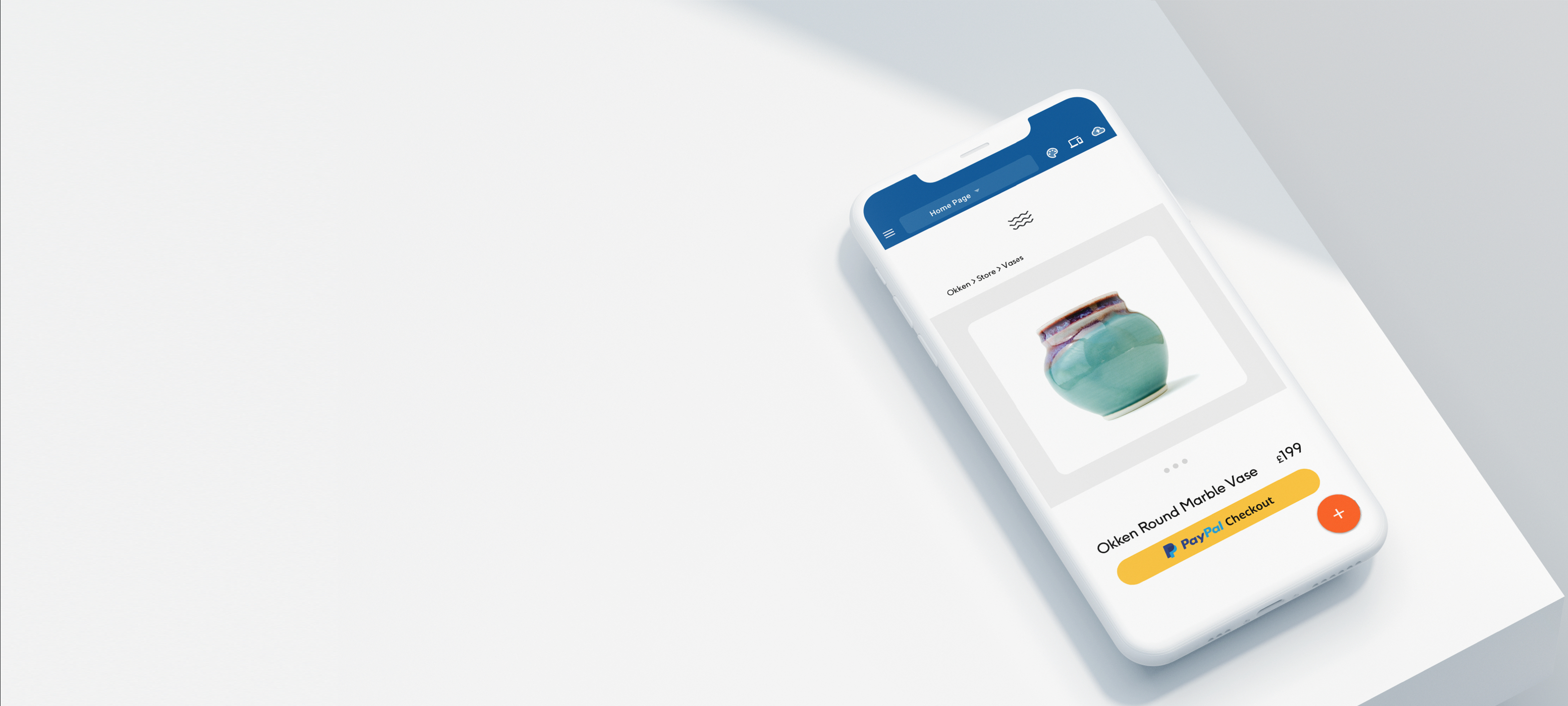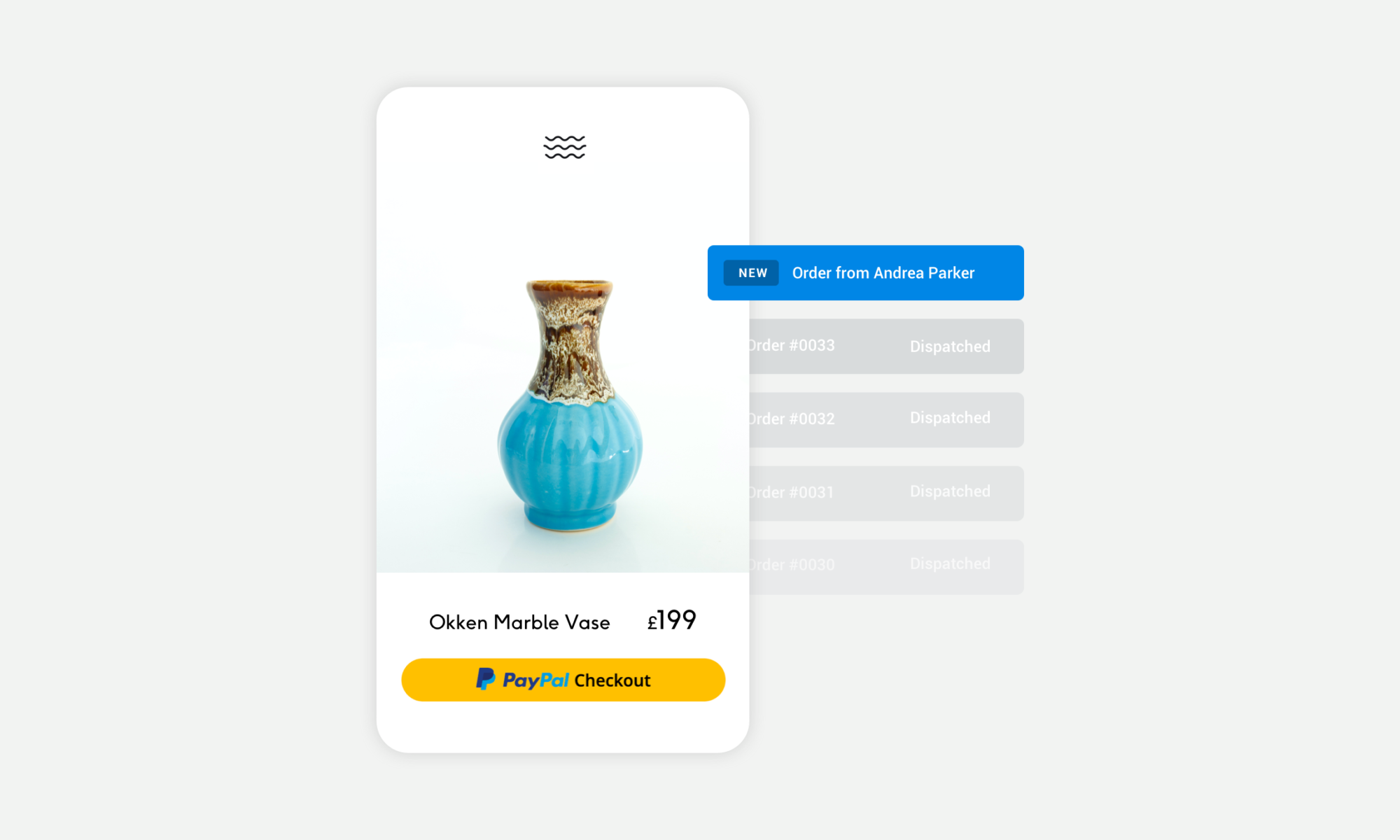If you’ve already set up your online store, congratulations! You’re ready to start selling. We’ve come up with a few ways for you to get your store out there and make your all-important first sale.
Haven’t set up your store yet? Take a look at how easy it is!
So, whether it’s in real life, with social media and online communities, or through advertising, here are a few ideas to help make your first sale…
How to promote your eCommerce store in real life
Even though your store is online, there are lots of ways to share it offline too:
- Friends and family – Once you’ve set up your online store, tell your friends and family about it. Ask them to spread the word and share it with their own personal and online networks.
- Sign-written vehicle – A little unusual, but stick with us! This is especially good if you have a strong online presence – which you will do now your beautiful site is ready! Have your web address, unique hashtags or social media handles made into a sticker. Put it in the rear window of your vehicle and you’ll have an easy way to direct people to your online presence.
- Physical presence – If there are local places where your ideal customers regularly hang out, why not drop off some flyers? Leave them there for people to find and they can navigate to your store in their own time.
- Pass on printed material – If you’re already attending things like makers’ fairs, local events or marketplaces, have business cards printed. Include your store details and hand out cards when somebody makes a purchase. That way, customers can share your store with their own friends and family. Who knows, they might even come back online and make a repeat purchase!
Leverage the power of online communities and social media
It couldn’t be easier to share your store online. However you choose to connect, be genuine and make it easy for customers to find you.
- Share a link to your store on social media – Once your site is set up, you can share it to your online channels directly from the store itself. Click the social buttons and off you go!
- Keep a link to your store in your bio – Whether you’re an Instagram person, a Twitter devotee, or you’ve set a Facebook business page, the bio section is prime real estate. The text ‘about you’ at the top of the page is highly visible. Put your store link there. If people are looking at your social feeds and they like what they see, they can explore your eCommerce site with a click.
- Online communities – Join small business groups or residents’ groups local to you. There are communities of makers, side hustlers and business owners across the internet. A small word of warning: be sure to genuinely engage. Often communities will have rules about when, or if, you can post promotional material. Not only will people remember you better if you’re genuine, you might find that the support of a community is valuable in its own right.
- Write a blog – Your blog is a great place to keep your followers up to date with everything that you’ve been up to. Sharing your store on your blog can be particularly useful, especially if you’ve got an engaged following. So, let your readers know your store is ready for business!
Don’t be afraid of online advertising
It might sound scary, but don’t worry! With the tools available to small businesses today, it’s easy to start advertising.
- Google ads – You can drive traffic to your store in a few simple steps. Land the right customers on your website with clever targeting or take people to whichever product page you want to promote.
- Facebook ads – If your ideal customer is on Facebook, then Facebook’s targeted advertising allows you to reach them.
- Competitions and giveaways – These are different to the structured advertising on platforms like Facebook or Google. Social posts, where you offer a giveaway or hold a competition can help raise awareness of your products. Even if your followers don’t win the competition, you will at least have made them aware of your store. And you never know… they may go on and buy from you anyway.
A quick word on advertising…
The key thing to remember with any kind of advertising is to know your audience. Have a clear idea of the kind of people that buy from you, where they like to spend time, what appeals to them and what doesn’t. For example, don’t advertise on Google, if people won’t be searching for your products on a search engine. Or, if you know that the kind of people that buy your products don’t use Facebook, you’ll probably be disappointed if you advertise there. So, bear your audience in mind when you plan your advertising.
Good luck with your new store…
We hope this blog is helpful; these are a few ideas to help you on your way to your very first sale. Remember to be creative and keep letting people know that your store’s ready and open for business.
Excited? So are we… 😄 🎉
Set up your store today! Register for a free 14-day trial and you’ll be one step closer to selling your products online…









